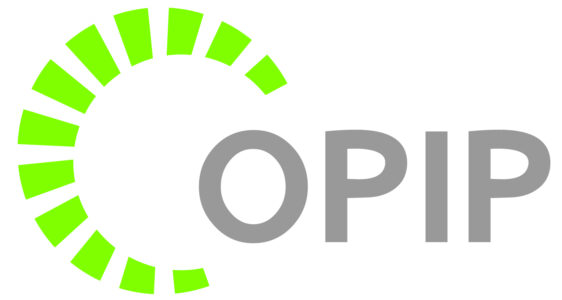PAST PROJECT
The Oregon Department of Education’s (ODE) early learning system and the Oregon Health Authority share a common focus on community and population-based developmental screening.
The 2015 state legislature instructed ODE to use funds from the Early Intervention and Early Childhood Special Education (EI/ECSE) budget to identify community-wide pathways for children who are identified “at-risk” on developmental screening tools to receive services in two to four communities. Within this community-level work, there is a focus in looking at pathways for children that are found to be ineligible for EI services.
OPIP received a contract from Willamette Education Service District (WESD) to support a community-level improvement project focused on follow-up.
• Click here for a Summary of the Project and Preliminary Learnings.
Definition note: This project focused on children identified “at-risk” who should receive follow-up services. These are children that are identified “at-risk” for developmental, behavioral, or social delays on standardized developmental screening tools. In the communities of focus for this work, a majority of providers use the Ages and Stages Questionnaire (ASQ). Therefore the children of focus are those identified “at-risk” for delays based on the ASQ domain-level findings.
• Click here for a presentation at the November 2017 Zero to Three Annual Conference by Colleen Reuland, Lisa Harnisch and Jennifer Richter titled: Ensuring Follow-up to Developmental Screening: Community-based Approaches with Primary Care, Early Intervention, and Early Learning.
Three Communities in this project – Marion, Polk, and Yamhill Counties: Within this three-county area, there are two Coordinated Care Organizations (CCOs): Yamhill Coordinated Care Organization and Willamette Valley Community Health, and two Early Learning Hubs (ELHs): Yamhill Early Learning Hub and Marion and Polk Early Learning Hub. Across the three counties there is one contractor providing EI/ECSE services, the Willamette Education Service District (WESD).
Key Areas of Focus and Questions to be Answered in this Project: The work funded by this budget note was specifically focused on: 1) Understanding the current pathways from developmental screening to services; 2) Understanding where and how children are falling out of this pathway and not receiving services to address identified risk(s). This includes an intentional focus on children identified “at-risk” on developmental screening tools and evaluated by EI, but found ineligible; and 3) Identifying and implementing improvement efforts focused on follow-up with the goal of ensuring more “at-risk” children receive services.
Project Design: The project is structured so that baseline information is collected about existing pathways and number of children lost in the pathways. These data will answer the key questions listed earlier and leverage data already being collected by CCOs, ELHs, and EI. Qualitative data about existing pathways from developmental screening to services and barriers experienced were collected through stakeholder interviews. New quantitative data about rates of referral for “at-risk” children were collected from the pilot primary care sites.
Stakeholders within the communities were engaged to review the baseline data. Informed by shared data, the communities identified specific priority areas on which to focus improvement efforts. A desired component of the pathway is secondary referral and support strategies for “at-risk” children found ineligible for EI. Community-specific triage and referral processes will be developed that identify follow-up service providers that are the best match for the child and family based on developmental screening risk scores.
The sites that piloted the improved processes are:
1) Three primary care practices serving a large number of children who reside in these counties; 2) WESD (EI); and 3) Community-based providers within the ELH such as home visiting programs. Given that these pilots exist within systems and processes involving CCOs and ELHs, and since they will be paramount to ensuring sustainability, these entities were engaged to a degree more intensive than other stakeholders.
At the end of the project, the improvement tools developed will be made publicly available so that they can be used by other communities across the state.
Engage and facilitate key stakeholders within the communities*:
Obtaining community input, buy-in, and ensuring the project was tailored to Yamhill, Marion, & Polk Counties was a critical component of this project.
Across Marion, Polk, and Yamhill Counties, OPIP conducted stakeholder interviews across the community with those who are either doing developmental screening or who can provide follow-up services to children identified at risk. OPIP also collected data about screening and follow-up from the CCOs, primary care practices, and Early Intervention Willamette Education Service District. Lastly, OPIP hired parents of young children to serve as advisors to the project. Parent engagement is an important component to all quality improvement activities at OPIP. Parent advisors were recruited to provide insight and share their experiences to help identify key issues or barriers within the referral and triage process, as well as gather feedback about educational materials and resources to ensure they are patient-centered.
Given the goal to be synergistic with CCO and ELH efforts, we engaged stakeholders in the counties in which they serve. Two groups of stakeholders were engaged: 1) Yamhill County and 2) Marion and Polk Counties.
Yamhill Stakeholder Meetings
Periodically these stakeholders met to review the key findings, identify project priorities and learnings, and to ensure that the findings were used to inform system-level improvements.
• Summary of Stakeholders in Yamhill County
• Stakeholder Meetings:
– January 2016
– March 2016
– August 2016
– December 2016
Marion and Polk Stakeholder Meetings
Periodically these stakeholders met to review the key findings, identify project priorities and learnings, and to ensure that the findings were used to inform system-level improvements.
• Summary of Stakeholders in Marion and Polk Counties
• Stakeholder Meetings:
– September 15, 2016 Meeting
– January 19, 2017 Meeting
– May 18, 2017 Meeting
*Please Note: The project was supported by Funding Opportunity Number CMS-1G1-12-001 from the U.S. Department of Health and Human Services, Centers for Medicare & Medicaid Services. That said, the content described on this page and disseminated through the project is solely the responsibility of OPIP does not necessarily represent the official views of HHS or any of its agencies.

